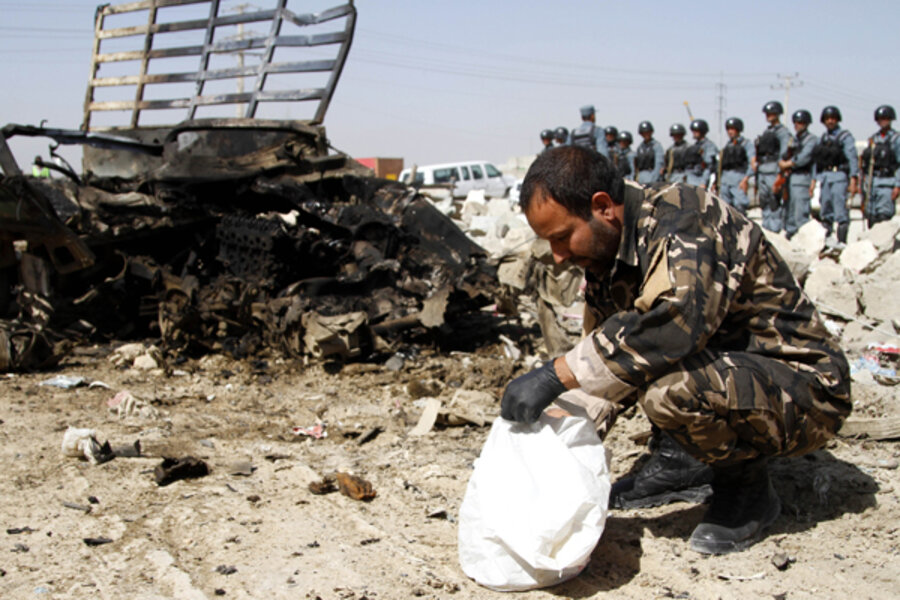Taliban assault on Kabul airport ends with seven militants dead
Loading...
• A daily summary of global reports on security issues.
Rocket-propelled grenades and gunfire shook Kabul this morning in a predawn militant attack on Afghanistan’s international airport, which houses a NATO headquarters. Afghan forces responded to the assault quickly, putting an end to the attack four hours after it began.
The Taliban claimed responsibility via texts and e-mails during the attack, which began just after 4 a.m. All seven militants involved died – five were killed by Afghan forces and two detonated suicide bomb vests – and there were no civilian or security force casualties, reports The Wall Street Journal.
“It started just after dawn prayers and I counted about a dozen explosions, mostly RPG fire, coming from (near) the airport,” a resident who lives near the airport told The Associated Press. Two buildings that were under construction and located near the airport were used by the Taliban during the attack.
Mohammad Yaqub Rasuli, the head of Kabul’s international airport, said that civilian flights were halted during the attack, but runways reopened soon after. According to the Los Angeles Times, the non-civilian side of the Kabul airport has a military wing, which hosts the Afghan Air Force, and NATO’s Joint Command headquarters.
This was the third attack in Kabul in a matter of weeks; a concentration of violence that analysts see as an attempt by the Taliban to intimidate locals in the lead up to the withdrawal of most foreign troops next year.
“By launching today's attack, the Taliban are showing they want to have a full hand at the negotiations table,” Abdul Wahid Taqat, a Kabul-based military analyst, told the Los Angeles Times.
Striking high-profile, well-guarded targets such as Afghan and NATO bases, even if the strikes fail, achieves several objectives, analysts said. The attacks spread fear and respect for the insurgency among ordinary Afghans as well as those working with foreign troops, which can help the Taliban and other militant groups recruit members.
They send a message that even heavily manned areas aren’t safe and that the insurgency can strike at will, potentially hastening the drawdown of NATO troops. And they are a show of strength to other Afghan groups and parties vying for power after the foreigners leave.
The Christian Science Monitor wrote last month that after more than a decade of international aid and military support, Afghanistan is preparing for a significant change.
Next year will mark the end of NATO’s combat mission in Afghanistan. By December 2014, the 99,000 US and other foreign troops still here will be gone. The Afghan National Security Forces – Army and police – will be left to largely stand on their own against a nasty insurgency….
Afghans in and around Kabul reveal anxieties about the US and NATO drawdown, and many say they have daydreams of leaving before chaos sets in – a recent Asia Society survey found that one-third of Afghans would leave the country if they could. Many express fear of the Taliban’s return to power – even though many Afghan experts assert that the country has evolved and modernized too much for that to happen.
But today’s attack could serve as a glimmer of hope for some. Afghan police and Army units carried out the operation against the Taliban, with international forces serving only an advisory role, reports the BBC.
The New York Times notes, “The response by Kabul’s security forces indicated that their speed and organization had improved markedly over the past few years.”
In earlier coordinated attacks by insurgents, civilians caught in the cross-fire were often killed or wounded and large sections of the capital were locked down for up to 20 hours. Although much depends on the tactics of the insurgents, it appeared that the Kabul police and Afghan special forces are now able to move faster and with less disruption to daily life.






